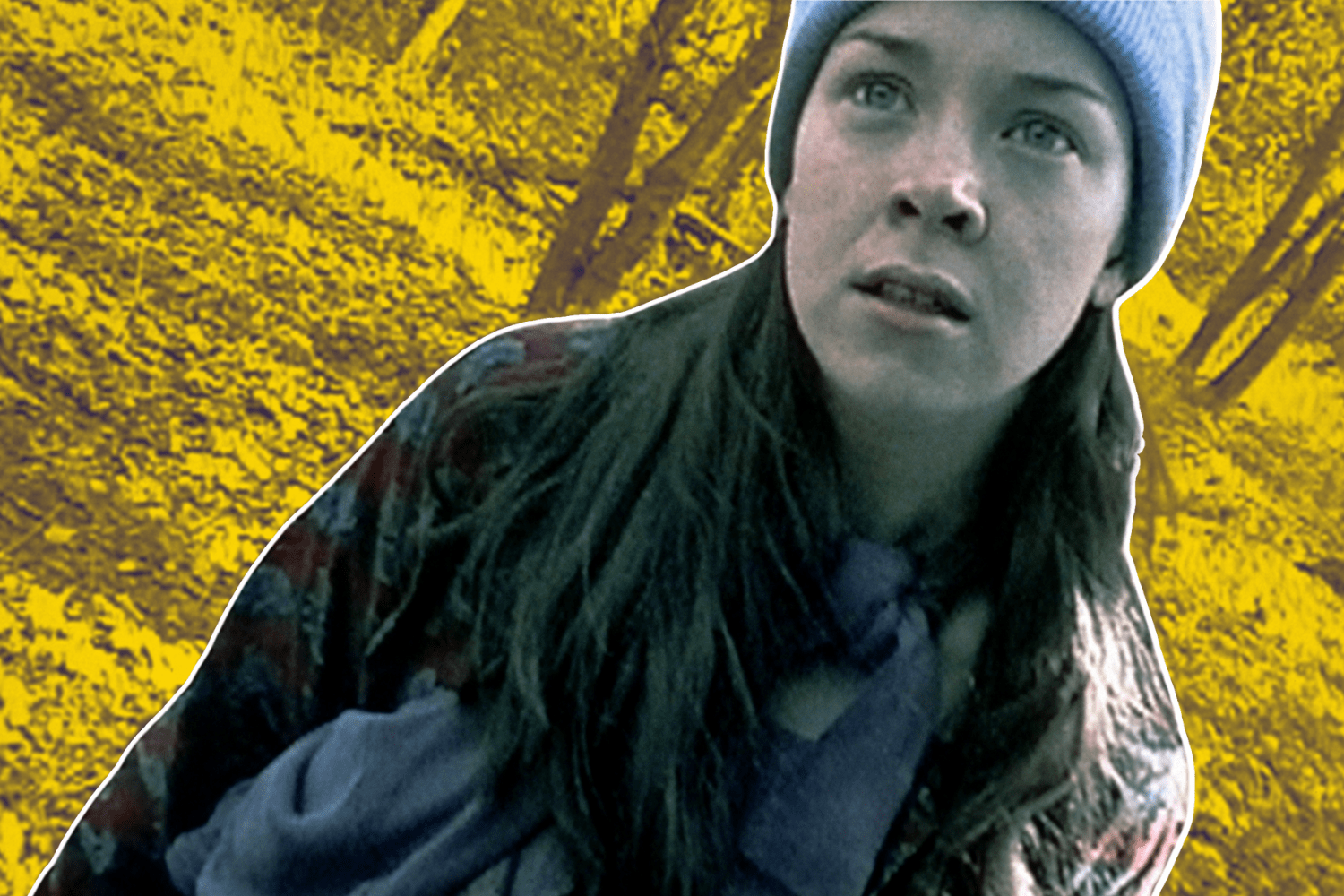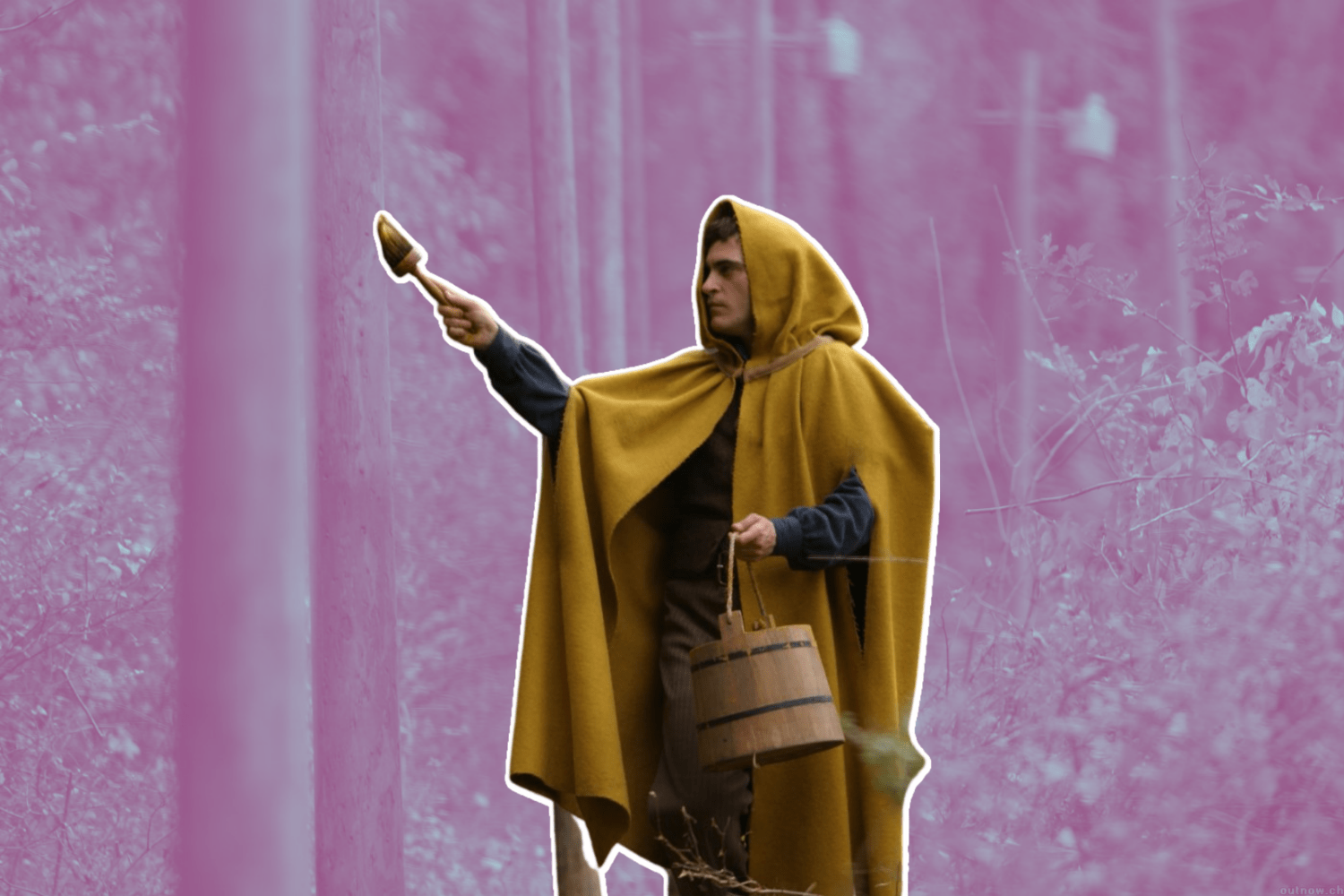Editorials
Reinterpreting ‘The Blair Witch’ Franchise as Fae Horror
June 13th, 2022 | By Sezín Koehler

The world of the Blair Witch franchise is filled to the brim with all kinds of witchy ciphers, from enigmatic stick figures, strange rock formations, and human teeth wrapped in burlap along with mutilated bodies arranged in pentagrams. The legend of the Blair Witch begins with Ellie Kedward in the 1800s, an accused witch found guilty of stealing and eating children, eventually captured and left tied to a tree in the woods to die. The horror continues with Rustin Parr in the 1940s kidnapping and murdering children by twos, supposedly driven by Ellie Kedward’s ghost.
By the time we get to the events in 1999’s The Blair Witch Project, adults are pulled into the vortex of this supposed Blair Witch as three documentary filmmakers go missing. Seventeen years later in 2016’s Blair Witch, a new group in search of the first meet the same fate. Sandwiched between these two tales of woodland woe is Book of Shadows, a story outside the foundational Blair Witch Project narrative that posits the first — and third — films are actually fictions, yet the characters are driven by the same terrible forces inspired by the so-called Blair Witch.
More By Sezín Koehler: Revisiting ‘The Village’ in the Era of Active Shooter Drills
As in real life, it’s always easy to point a finger at a witch when supernatural occurrences surface. But it’s the manipulation of time in all three stories that gives me pause and begs the question: Are the events of the Blair Witch trilogy the work of a ghost witch, or did each intrepid group stumble into a Faerie circle whose denizens have a taste for human flesh? There’s definitely something sinister in the Black Hills, and there’s a trove of evidence across the trilogy suggesting the franchise is actually an installment of Fae horror.
The first major textual clue comes from Mary Brown (Patricia DeCou) in The Blair Witch Project long before Heather (Heather Donahue), Josh (Joshua Leonard), and Mikey (Michael Williams) even step foot in the Black Hills. Mary describes having an encounter in the woods with a hairy creature with a strange face, an incident Heather and company laugh off as the ravings of a reclusive madwoman. But the being Mary describes is the very essence of a forest Faun, a member of the Fae family. Since this sighting doesn’t mesh with the stereotype of what an encounter with a witch would entail, this detail straight out of a Fae horror story is universally overlooked.
Digging in deeper, stories of the Fae abound with their taste for human children as well as their ability to enchant humans to do their bidding. Could Rustin Parr have been hearing a Fae’s commands as he kidnapped children from the town of Blair and brought them into the woods? In The Blair Witch Project, Josh hears a baby crying in the woods but insists it couldn’t be an actual baby. In a Fae reading, yeah, it probably was either a baby the Fae were preparing to eat or a changeling that would be used to swap out a human baby for a Fae one.
In Blair Witch, the group hears tell of a girl who was pulled into the river by a mysterious hand where Burkittsville was first founded, and her body was never found. This is classic water nymph activity, including eating the child down to its bones so there’d be nothing left to find. Also, in Blair Witch, Ashley (Corbin Reid) cuts her foot in the river and later finds an egg-like sac inside. Human blood wakes up Fae and the egg was likely an Ashley changeling that later could be used to infiltrate the human world and confirm the presence of a murderous Blair Witch, deflecting Fae activity in the area altogether.
There’s a cardinal rule about entering a Faery circle: Never tell the Fae your real name. Because everyone in the trilogy thinks they’re on the hunt for a witch’s ghost, this basic rule is breached over and over again as the three disparate groups all introduce themselves on camera by name, and continue to shout each other’s names in the woods long after they’ve entered the Faerie realm of the Black Hills. You must never eat anything inside a Faery circle either, and everyone in the franchise breaks that rule, too.
Fae create illusion and mirage to herd people into their magical circles where time doesn’t move the same as it does in the human world. Could this explain why in each of the three Blair Witch films time suddenly loses all meaning and the groups walk in an impossible loop through the Black Hills? In Blair Witch at one point, Talia (Valorie Curry) says it’s been night for days after she and co-tour leader Lane (Wes Robinson) have been kicked out of the group. Lisa’s (Callie Hernandez) alarm goes off at 7am but there’s no sun, and another day they sleep until 2pm somehow without noticing it. Inside Rustin Parr’s house that shouldn’t exist it appears to be the dead of night, but every so often we see flashes through the boarded up windows showing daylight outside. These are all Fae machinations and mirages to toy with the humans.
Fae also love to mess with electronics since they are allergic to iron, which would explain why Heather, Josh, and Mikey’s footage was buried deep under the ruins of Rustin Parr’s house. They also greatly value their privacy, so would want to hide the evidence of their trickery. Fae’s iron sensitivity would also explain the manipulated film and videotapes in Book of Shadows, scrambled and hidden so as not to reveal the actual causes of the group hysteria, shared hallucinations, and mass murder. In 2016’s Blair Witch, their high-tech drone suddenly goes on the fritz and smashes to bits after its fall, which could be the Fae once again protecting their privacy and eliminating one aspect of iron from their victims’ possessions.
Setting up rock cairns, hanging mysterious stick figures, and stealing human teeth: these are all tricksy Fae behaviors to scare humans and tenderize their flesh. In Blair Witch, Talia finds her own hair wrapped in a stick figure, and when they snap the twigs Talia snaps too. Like collecting teeth, Fae also collect hair, buttons, nails, and other human objects to add power to their enchantments.
Faeries can make structures appear and disappear to further alter humans’ sense of reality, explaining the huge tree the Book of Shadows crew see growing out of the foundations of Rustin Parr’s house, that’s later revealed to be a simple twig. “We brought something back with us,” Erica (Erica Leerhsen) says in Book of Shadows, and it’s true: taking one rock or twig or even a part of a leaf from a Faery circle increases the range of said circle, allowing the Fae to manipulate events miles away. From his home, Jeff (Jeffrey Donovan) sells rocks from the Black Hills as well as makes his own stick figures, giving the Fae easy access to the group as we see in the grotesque escalating events of mass murder. In Blair Witch, Rustin Parr’s house suddenly appears as the group continues retracing their steps through no fault of their own. The same supposedly nonexistent house in which Heather, Josh, and Mikey also meet their ends in the original movie.
While Fae will do their thing at all hours, a good chunk are nocturnal. Why else does the Tooth Fairy only visit after you’ve gone to sleep? In the case of the Blair Witch franchise, not allowing a good night’s sleep confuses humans, leading to infighting and general interpersonal suspicion, classic Fae trickery that further ensnares humans in their web.
The most convincing piece of Fae horror evidence comes at the end of 2016’s Blair Witch when we finally see the supposed witch: It looks like a close cousin of the Fae Pale Man from Pan’s Labyrinth, with its tall body, overlong arms and legs, dripping fanged maw, and hugely clawed hands — all common traits of a flesh-eating Fae.
In the context of a Fae reading, the legend of the witch is just another Faerie ploy to trick humans into a shadow realm from where they can never escape. It’s common knowledge that witches are historically vilified figures in the human world, yet also inspire a dark fascination from the same humans who denigrate them. Through this hagstone lens, Mikey in The Blair Witch Project was a total dick when he kicked the map into the river, but he was also right: The map was absolutely useless once they entered the Fae’s realm. Blair Witch as Fae horror actually ends up being a unifying theory of all three films, making them a proper narrative trilogy, rather than two unrelated sequels taking place in different versions of the original world.
The fact that the first movie was filmed with the crew performing unscripted and terrifying pranks on the three actors while in the deep woods only adds to the dark charm of the trilogy as an installment of Fae horror. It makes me wonder whether the original Blair Witch Project directors Daniel Myrick and Eduardo Sánchez were stealthy Fae agents all along, waiting for someone to finally realize their genre-changing opus isn’t about a witch at all. And maybe it never was.



